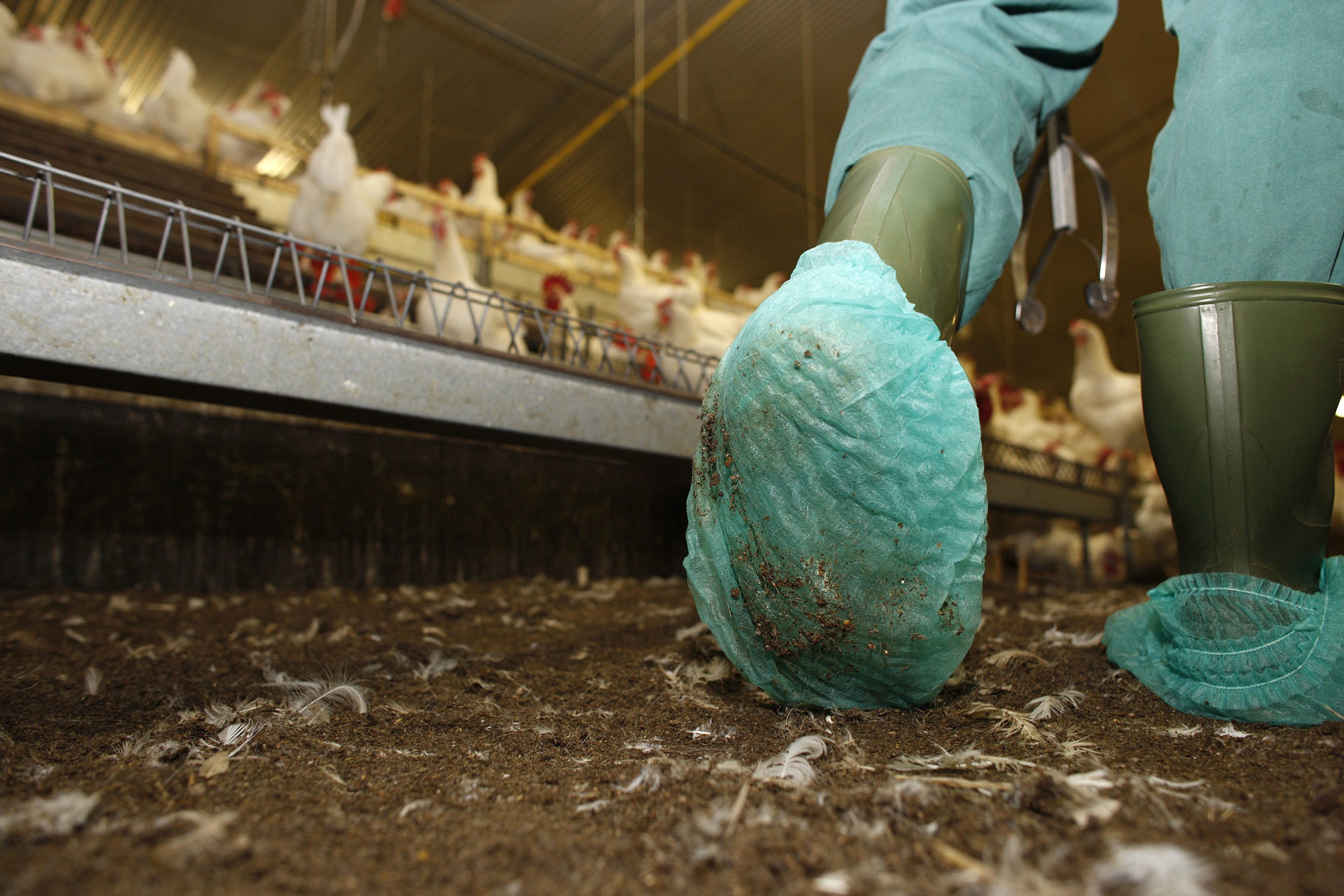Reduce Clostridia to reduce its effects

US researchers estimate that subclinical necrotic enteritis results in a 12% reduction in body weight and a 10.9% increase in feed conversion rate compared with healthy birds. A targeted microbial solution can reduce the economic impacts.
Clostridial bacteria are everywhere. The directory of places they are not found would be a very short list, indeed. These bacteria live in the soil and in poultry facilities throughout the world and are part of the normal digestive tract bacterial community for animal species everywhere, including your birds. As such, Clostridia continually make their way into facilities, feedstuffs and poultry flocks, causing various challenges to bird health and efficiency, including severe mortality, when conditions get out of balance.
Diagnosis of enteric diseases can be hard
Necrotic enteritis is caused by Clostridium perfringens, which typically occurs in broiler chickens but has also been diagnosed in various avian species. Several predisposing factors for necrotic enteritis have been identified, including dietary factors, immune status, stress, intestinal physiopathology and coccidiosis1. During gut integrity compromising events (such as with Coccidiosis) they can proliferate to cause necrotic enteritis. Because Clostridia are so common, diagnosis of enteric diseases produced by them is usually challenging and it is often difficult to determine their precise role in illness. For instance, even though C. perfringens naturally occurs in the intestines of chickens, its presence alone is not a determining factor for disease development. However, when disruption of the gastrointestinal tract occurs, major consequences in terms of bird health and growth follow2.
“Maintaining intestinal integrity is a daily challenge in today’s poultry industry, and it will likely become even more challenging with increasing environmental considerations, changing feed ingredients and reduced medication usage,” says Dr Audrey McElroy, Texas A&M University Poultry Science professor and extension specialist. Unfortunately, it’s not realistic to eliminate or prevent infection through quarantine, disinfection or sanitation. Additionally, oocysts, the thick-walled stage of the life cycle of coccidian parasites, are extremely resistant to common disinfectants, meaning it’s not possible to completely sterilise a poultry facility against the many disease-causing organisms that occur throughout its environment. Yet, you must address the challenges posed by Clostridia and other organisms that trigger clinical and subclinical problems. Researchers at the Animal Microecology Institute’s College of Veterinary Medicine at the Sichuan Agricultural University in Chengdu, China, note that necrotic enteritis, especially subclinical necrotic enteritis, has become one of the most threatening problems in the poultry industry3.
Figure 1 – Results from a field trial indicate that Targeted Microbial Solutions can help reduce the prevalence of C.perfringens.

A very costly disease
US researchers estimate that subclinical necrotic enteritis results in a 12% reduction in body weight and a 10.9% increase in feed conversion rate compared with healthy birds, leading to an increased cost to producers ranging from about US$ 370 to approximately US$ 739 per flock4. A comprehensive sampling programme on US poultry farms offers insight into microbial communities in specific environments, including the presence and prevalence of Clostridia and other bacterial species. The information also helps provide a snapshot of bird health on tested facilities. For instance, in addition to clinical signs of necrotic enteritis from individual bird samples, this information also shows levels of subclinical challenges that cut into profits even though you may not see clinical disease symptoms, losses due to poor weight gain and greater variation in performance. In the case of subclinical enteritis, chronic intestinal mucosal damage leads to production losses due to poor digestion and absorption, reduced weight gain and increased feed-conversion ratio. Generally, no overt clinical signs are present and usually there is no elevated mortality5.
Effect of microbial solutions
Microbial solutions are one tool poultry producers have employed to help lower disease risk while helping to support gastrointestinal function. Specifically, the identification of the bacteria found at a location are being used to help identify which combination of microbial solutions would best inhibit the growth of undesirable organisms in poultry complexes. These targeted solutions feature proprietary Bacillus strains and address organisms such as C. perfringens, avian pathogenic E. coli and Salmonella. Bacillus strains are natural enemies of Clostridia and other organisms; long-term use will result in a shift in the bacterial species diversity over time. An in-field study6 measured pathogen levels over time from more than 2,000 broiler gastrointestinal tract samples. Feeding a targeted microbial solution effectively changed the microbial landscape to reduce the prevalence of C. perfringens. A reduction in the prevalence of and avian pathogenic E. coli was also noted during the trial. These results indicated that along with proper bird and facility management, it is possible to help reduce gut population shifts that may give rise to necrotic enteritis and other clinical and subclinical diseases. US producers are learning that this change in pathogen diversity helps increase gut health and lower harmful bacterial loads in animal gastrointestinal tracts, which in turn, helps enhance flock health and efficiency.
References 1-6 are available on request.
Author:
Dr Dan Karunakaran, Arm & Hammer, Technical Services Manager Poultry











